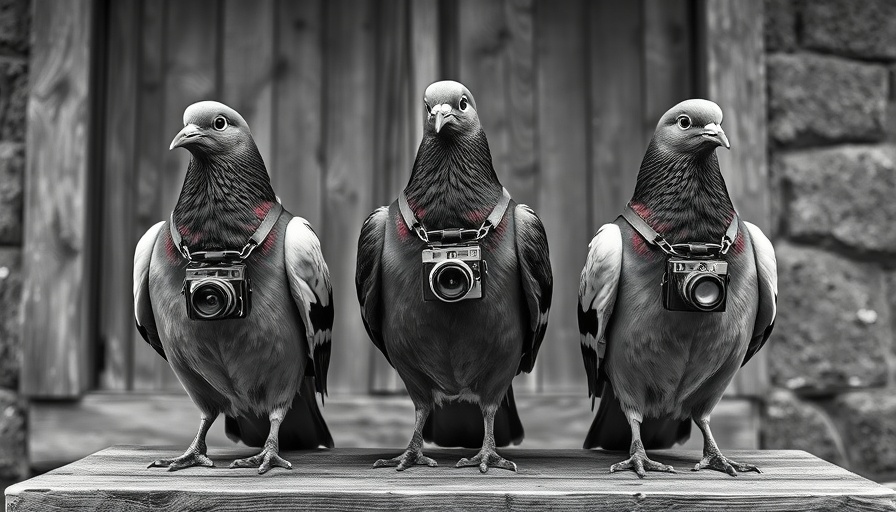
The Fascinating Invention of the Pigeon Camera
In the early 20th century, a remarkable innovation unfolded in the realm of photography—the pigeon camera invented by Julius Neubronner. This device, a small camera strapped to the breast of carrier pigeons, allowed for aerial photography that captured poignant bird’s-eye views of the world long before airplanes made such perspectives commonplace. This quirky invention highlights a unique interplay between nature and technology, showcasing how even the most unassuming creatures contributed to art and science.
The Artistry of Aerial Photography
While contemporary aerial imagery is cultivated through drones and sophisticated technologies, Neubronner's pigeon photos hold a certain chaotic charm. These images, characterized by their erratic framing and candid depictions of landscapes, evoke emotions that polished photographs might lack. Each snapshot tells a story of the pigeon's flight—an intimate glimpse into a world where humans are but tiny figures, dwarfed by the enormity of nature. Viewing these photographs is as enchanting today as it was a century ago.
The Decline of the Pigeon Camera
With the emergence of airplanes as the dominant means of aerial exploration, the pigeon camera gradually fell out of favor. However, its legacy lives on, underscoring the innovative spirit of its time. As we forge ahead in an era defined by rapid technological progress, it is essential to reflect on how such innovations, born from necessity, can inspire future inventions. The nostalgic lens of the pigeon camera serves as a reminder of the beauty and unpredictability of natural perspectives.
Reflections on the Beauty of Nature
In today’s world where aerial views are at our fingertips thanks to Google Maps and drones, it’s easy to forget the awe of witnessing the earth from above. Neubronner’s invention granted a privileged glimpse that speaks to our inherent fascination with flight and perspective. This historical account not only celebrates the innovation of the pigeon camera but also emphasizes our enduring connection to nature’s flight, encouraging us to appreciate the simple beauty that surrounds us.
 Add Row
Add Row  Add
Add 




Write A Comment